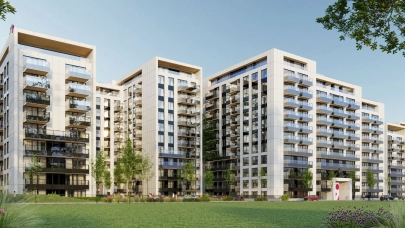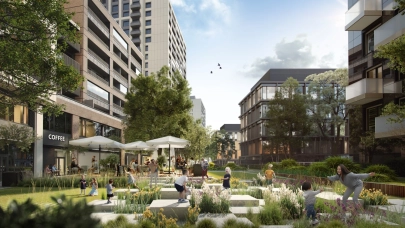
Christopher Mertlitz, Managing Director, Head of European Investments at W. P. Carey, talked to Property Forum about the environment for property transactions in 2023 and the company’s focus on mission-critical projects in its portfolio.
From your talks with companies, is the ongoing war in Ukraine having an impact on property transactions in Europe?
We are just going through a phase where we see so many things happening at the same time. This includes the energy crisis, inflation and interest rates going up. Before the Ukrainian crisis, there was the Covid-19 pandemic and Brexit. I would say that from a pure property investment perspective, the war has had, at least to me, no noticeable impact on transaction volumes. Any impact we have seen has been overshadowed substantially by the changes in the capital market landscape, with interest rates going up so rapidly.

Christopher Mertlitz
Managing Director, Head of European Investments
W. P. Carey
As the ECB is increasing interest rates, how will that impact funding costs during 2023?
The bond-buying program is being dialled back massively and there is less liquidity pumped into the markets. It is very clear to me that the cost of funding is going up. We are now in a situation where rates will continue to go up to tame inflation. And the political consensus broadly is that there is a willingness to accept economic slowdown, even a recession and rising unemployment, to bring down inflation because we would rather take that hit now than see what happens if inflation gets out of control.
Is there increasing pressure for rents to grow in the commercial property sector?
To a large degree, yes. For developments, you will need higher rents to justify the high construction costs combined with a higher cost of funding. But in many other forms of real estate, it depends. The rent growth applies for logistics and industrial, but for offices and retail projects, it is a nuanced picture because a lot of it depends on total occupational costs. The outcome we will see is based on the individual tenant, the building, and the environmental features it has, as well as the energy cost to occupy and operate a property. The market will become much more selective, which also will translate into a lower transaction volume.
What do you think are the strong points of Europe as an investment destination?
If you look at Northern or Western Europe, you will have some mature urban markets that tend to be more liquid. You also have a more established or secondary market if you want to exit an investment. W. P. Carey is a ‘buy and hold’ investor, meaning we are committed to owning our assets for the long term. This means that the liquidity premium that you might get in certain markets is not necessarily much of a plus for us, given our long-term strategy.
What kind of assets are on your investment radar at present?
Our investment focus has not changed for the past 50 years. We continue to identify buildings that have material importance, which we call mission-critical. This means finding a building that is important for that particular tenant’s business so that they do not want to leave over the long term. The primary question is where can we identify properties in North America and Europe that are very important to the tenants that use them? The answer is not always obvious. For instance, earlier this year, we acquired a portfolio of 26 crematoriums in Spain. That is not a traditional asset class, but it is real estate. Once we have identified those buildings, then we look at how the tenants are able to pay the rent going forward and how we can structure the deal in the best possible way for a long lease.
How is it that more than half of your portfolio is in industrial?
We look for critical assets and these tend to be industrial properties. If you buy a building that produces products that are responsible for a significant portion of a company's profits, then you can understand it is an important building. Another key characteristic is if the building has attracted investments from the tenant in property, machinery, equipment, installations, and the labour force, which would make relocation difficult. However, we did not start out by saying we need a certain percentage of our portfolio in industrial. On the contrary, we start with the criticality of the asset and that leads to the portfolio structure we currently have.
Are there certain trends or risks that can change your investment approach?
Our investment approach has largely remained the same since our inception. For the last few years, everyone has been talking about investing in logistics. Logistics in itself can be a great investment, but just buying logistics at any price is not a good investment. So much of what we do, actually, as investors, is just trying to predict the future. But so much of it is just psychology and due to the herd mentality, everyone often gets crowded into one asset class. Everyone's philosophy has been that logistics is great, retail is terrible. Well, we like retail, in certain cases, if it is food retail or if it is DIY retail which has been very resilient. We really do not try to fall into the same herd mentality as we often invest with a multi-decade mindset.
With this approach, you must have patient shareholders. Is that the case?
We have now been listed since 1998 and in the past 25 years have delivered stable and growing income for our shareholders. We have also remained incredibly resilient during times of economic volatility, including during the dotcom bust, the great financial crash, the Eurozone crisis and the COVID-19 pandemic. We invest to generate income growth, rather than trying to flip and sell assets and ride cycles and waves.
To sum up, what is your outlook for European property investments going into 2023?
It is particularly challenging to predict the degree of uncertainty we are experiencing in capital markets right now. Obviously, what is happening with the war in Ukraine makes it difficult to give sensible predictions. What we will see in Europe and in the US, and frankly, worldwide, as we go into 2023, is continued upward pressure on yields.
Interest rates are really shifting. The FED has continued to increase rates and the ECB’s communication points towards a policy of higher for longer, meaning rates will go higher than initially expected and they will stay there for longer. That will have a material impact that cannot be understated on valuations for property investments. On a relative basis, a bigger impact will be felt in Western Europe.
The degree of distress in sellers is still fairly low, given that these changes are relatively recent, and the bulk of professional real estate investors have been very diligent in extending debt maturities, and today there is relatively little near-term urgency in transacting. Looking at 2023, it will be upward pressure on cap rates. Certainly, the days when you could sell a German logistics building at a 3% yield are gone for now. Thus, next year will likely see an overall decline in transaction volumes as the market continues to transition to a new equilibrium between buyers’ and sellers’ expectations.



